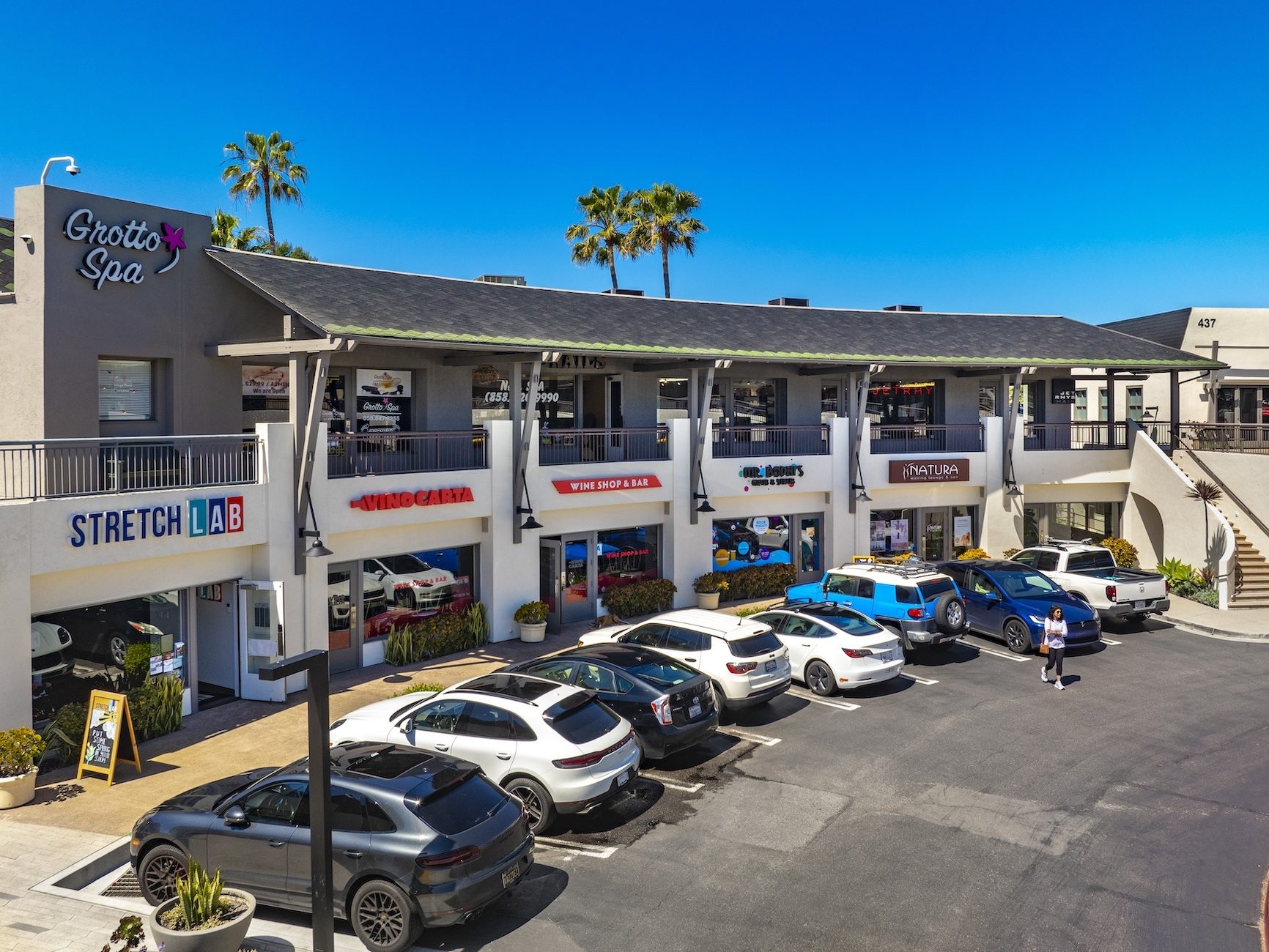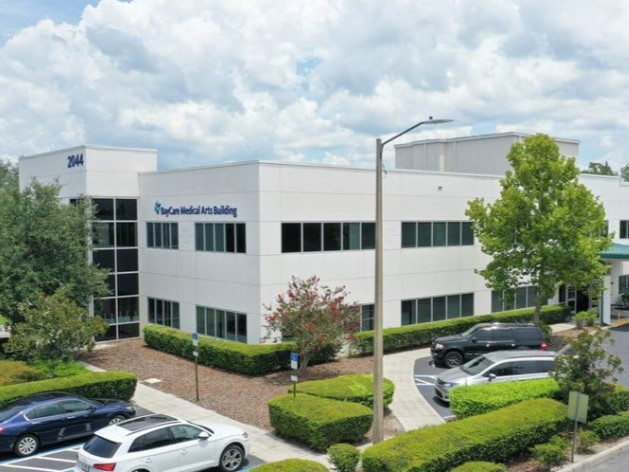Ready to Launch
Dan Goodwin guides Inland Group’s integrated investment strategy
Dan Goodwin Guides Inland Group’s Integrated Investment Strategy
By Paul Rosta, Senior Editor
Whatever surprises may await the commercial real estate market during the second half of 2013, in at least one respect it will be business as usual for Dan Goodwin, chairman & CEO of Inland Group of Real Estate Cos. In a typical year, Goodwin and his colleagues oversee the launch of between five and 20 new enterprises: limited partnerships, funds, non-traded REITs and other investment businesses. Since the late 1960s, Inland Group and its affiliates have started some 600 different entities. On the strength of that prolific entrepreneurship, the team has built their onetime sideline into a national powerhouse.
In March, a subsidiary of Inland American Real Estate Trust Inc. acquired Andaz San Diego (left), a 159-key boutique hotel. University House Arena District (center), a 65-unit student housing complex, is scheduled to open this fall in Eugene, Ore. Last September, Inland Diversified Real Estate Trust bought a majority stake in City Center (right), an upscale retail-and-apartment complex in White Plains, N.Y.
Through its investment vehicles and proprietary companies, Inland Group has a hand in an unusally broad assortment of real estate activities, from capital markets and mortgage lending to investment management. Its most visible manifestation is the $20.8 billion portfolio owned by its affiliates: encompassing 88.7 million square feet of office, retail, industrial, multi-family and hospitality properties in 48 states. That was sufficient to land Inland Group in fifth place on CPE’s 2012 index of top owners. It is an improbable journey for a company that began life in 1967 as the sideline of four young Chicago elementary school teachers. As Goodwin explained, “We weren’t planning to become a diverse incubator of businesses.”
Inland’s reach and eclectic interests are illustrated by a sampling of transactions announced during the first four months of 2013 by its non-traded REITs. Inland Diversified Real Estate Trust Inc. bought Hasbro’s Providence, R.I., headquarters for $29.8 million. Hotel deals included the $53 milliion acquisition of Andaz San Diego, a 159-key boutique property located in that city’s Gaslamp District and managed by Hyatt. The buyer is a subsidary of Inland American Real Estate Trust Inc. On the disposition side, Inland American sold Minnesota’s tallest office tower—the 1.4 million-square-foot IDS Center in Downtown Minneapolis—to a joint venture led by Beacon Investment Properties L.L.C..; the asset commanded a $253 million price tag. And near the University of North Carolina in Charlotte, an Inland American affiliate started construction on a 300-unit student housing project that is scheduled for a fall 2014 opening.
Sideline Business
Goodwin and fellow teachers Bob Baum, Joe Cosenza and Bob Parks had no intention of building an empire when they started the company in 1968; instead, they wanted to build single-family homes as a sideline. “Because we were in our 20s, we didn’t have the financial wherewithal to put together businesses of any significance,” Goodwin recalled.
Seeking an alternative to elusive bank financing, the partners established limited partnerships to raise capital, at first from their fellow teachers. For the first few years, Goodwin and the team managed their fledging business by working around school hours. “All of our meetings were after 3:15,” recalled Cosenza, vice chairman of Inland Real Estate Group Inc. and president of Inland Real Estate Acquisitions Inc. By 1973, the enterprise had grown too large to manage as a sideline, so Goodwin and his colleagues quit their day jobs in order to run it full time.
Remarkably, Inland Group’s original quartet of principals is still intact after 45 years. As head of acquisitions, Cosenza is in charge of due diligence and negotiating deals for Inland Group affiliates. Parks is chairman of Inland Real Estate Investment Corp., which sponsors the group’s REITs; he oversees investment programs, corporate budgeting and administration, and investor relations. And Baum, a Northwestern University law school graduate who met his colleagues during a brief stint in the classroom, serves as vice chairman & general counsel. He came on board full time in 1973 after practicing labor law in Chicago.
Goodwin’s service to the industry includes founding of the National Association of Real Estate Investment Trusts’ non-traded REIT council. “I’ve seen firsthand over the years exactly how effective Dan can be by providing thoughtful leadership, building meaningful consensus and demonstrating the art of inclusion with his team at Inland as well as with his peers in the industry,” commented Steve Wechsler, NAREIT’s president & CEO. “He’s distinguished himself by the productive efforts of the council, by careful consideration of other viewpoints and (by leading) a variety of actions and initiatives.”
Along with these contributions, Goodwin is a good-government advocate who practices what he preaches. As the longtime chair of the DuPage County Airport Authority, he is credited with changing the once-troubled facility’s fortunes. His insistence on contracting reform, better financial management and improved operations turned a $2 million annual deficit into a $1 million profit.
Goodwin is also a supporter of initiatives like the Better Government Association, a non-profit research and watchdog group. “He’s very concerned about the direction of government in the country, from Washington to Springfield to Cook County to DuPage County,” said Andy Shaw, a former journalist who heads the organization. I think he senses that there’s no reason why government can’t perform well, as his business has.”
Inland Group’s investment strategy has repeatedly adapted to sea-changes in the capital markets. For the first decade or so, limited partnerships continued to be its vehicle of choice. The company used the funds to expand from single-family homes to apartments, and expanded its portfolio to more than 40,000 rental units by the late 1970s. An early milestone arrived in 1979, when it launched its first fund outside Illinois.
Goodwin and his partners faced a major challenge after Congress passed landmark tax legislation in 1986. Among the ramifications of the law was diminished value of limited partnerships, which had been a mainstay of their financing. When limited partnerships began to lose value generally, Goodwin and his partners responded by pooling their resources and essentailly bailing out their limited-partner investors. They sold non-performing assets out of their limited partnerships and used 1031 exchanges to invest the proceeds. Wal-Mart stores were favorite assets, and by the end of the 1990s, Inland Group was the retailer’s largest landlord. About 2000, the limited partnerships began divesting their Wal-Mart holdings and providing attractive returns to their investors.
Although the company’s businesses pursue a highly varied menu of assets, its executives cite several particularly appealing investment categories. “Right now is probably a good time to be buying shopping centers,” argued Cosenza, estimating that rents for new leases are up 11 to 13 percent year over year for retail space owned by Inland Group’s various investment vehicles. Renewal prices are up 5 to 15 percent compared to 2012. In a vote of confidence for the retail sector, late last year Consenza and his team handled the $293 million acquisition of six Las Vegas-area properties that are anchored by grocery or home improvement stores. The team made the deal on behalf of Inland Diversified Real Estate Trust Inc.
Another attractive niche is student housing, like the 118-bed property near the Texas Christian University campus in Fort Worth that was acquired in March by Inland American Communities, part of Inland American Real Estate Trust. That transaction followed Inland American Communities’ $94.6 million acquisition of two student housing complexes from Landmark Properties last December: a 710-bed facility near the Florida State University campus in Tallahassee and a 554-bed property close to the North Carolina State University Raleigh campus. Student housing offers opportunities to build as well as buy; this fall, Inland American Communities will open a 244-bed student housing project near the University of Oregon’s campus in Eugene.
Intricate Structure
At first glance, Inland Group presents an intricate structure containing everything from investment vehicles and operations affiliates to capital markets services, many of them with similar-sounding names. These myriad enterprises boil down to a few broad categories. First, there are proprietary businesses, which provide operations, acquisition, property management, capital markets and other services. Inland Continental Property Management Corp., for example, manages a 12 million-square-foot portfolio of 125 properties in 27 states.
The large number of businesses bearing the Inland name occasionally causes confusion in the media, but Goodwin said that clients “love coming to a one-stop shop and being able to go anywhere in the country.” Goodwin contends that the diversity of its affiliates provides a competitive advantage. The 48-state sweep of its portfolio provides ample choices for Inland Group’s customers. “We say, ‘Where do you want to locate?’ ” Whether the client’s answer is broad—west of the Mississippi—or specific—metropolitan St. Louis—Inland Group’s in-house leasing team has options to present. In the capital markets arena, several proprietary companies also further investment goals. Inland Institutional Capital Partners identifies investment opportunities and private equity and has raised more than $7.5 billion since 2005. Inland Private Capital Corp. serves high-net-worth individuals and family offices through Delaware statutory trusts, tenant-in-common vehicles and 1031 exchanges. Inland Mortgage Corp. has originated more than $16 billion worth of loans and has a $10.6 billion loan servicing portfolio.
Inland Group’s in-house operations units serve the other side of the shop: a broad spectrum of investment vehicles, ranging from both traded and non-traded REITs to limited partnerships and Delaware statutory trusts. Each enterprise is run as an individual business with separate executives and boards of directors. “As a practical matter, it has to be that way, because it would be almost impossible to manage 600 (companies) that we’ve formed,” Goodwin noted.
In launching their non-traded REITs, funds and other enterprises, Goodwin and his colleagues follow a basic pattern. The incubation process begins with assessing the market and identifying vehicles that investors are likely to find attractive. “We’re following these trends, focusing on the most desirable” property categories and markets, he noted. Several years of planning and regulatory approvals often follow, and executives and directors are recruited.
After the launch, Inland Group affiliates provide support services like leasing and property management, as well as business advisory services. That continues until the entity’s board decides on the next step. If the entity decides to become self-advised, it also assumes responsibility for property management and other services that Inland’s operating affiiliates had provided initially.
Startups can also take advantage of centrally provided back-office functions, a practice that Inland Group has employed since the 1970s. Each affiliate has access to administrative services provided by units that are set up as not-for-profit companies. “We realized early on it was redundant to form a new … human resources department (or) IT department” for each new entity, he noted. He believes that Inland Group was one of the first commercial real estate firms to adopt this model, which Goodwin calls “very cost-effective.” Inland Group’s entities find a competitive advantage in receiving the services that frequently provide motivation to stay in the fold.
The REIT Investment
Inland Group’s REITs are sponsored by Inland Real Estate Investment Corp., which has also sponsored six 1031 exchange programs. Its sixth and newest REIT, dubbed Inland Real Estate Income Trust Inc., made its debut last fall. The non-listed company expects to raise as much as $1.5 billion, which it plans to invest in a diversified portfolio. Among its first moves was the acquisition of more than a dozen Dollar General stores. (The new REIT’s president & COO, JoAnn McGuinness, was named a CPE “Star to Watch” for 2013.)
If other non-traded REITs are any indication, McGuinness has some busy years ahead. Since its initial offering in 2004, Inland American Real Estate Trust Inc. has assembled a 759-property portfolio encompassing some 49 million square feet of retail, industrial and office properties; 4,900 multi-family units; 16,400 hotel guest rooms; and student housing facilities that accommodate 5,332 beds. In early May, an Inland American fund launched a $600 million joint venture with PGGM Private Real Estate Fund, an asset manager for five Dutch pension funds. The venture is targeting stabilized, necessity-based retail centers in Texas and Oklahoma.
Inland Real Estate Corp., Inland Group’s sole public REIT, manages a 15.3 million-square-foot portfolio of retail assets in the Midwest. About 60 percent of the properties are located in metropolitan Chicago; another 18 percent are in the Minneapolis-St. Paul market.
Inland Group’s highly diversified structure helps to mitigate risk, an advantage highlighted during the Great Recession. “Businesses that bought nothing but mortgages at a discount—or bought real estate at a discount—did very well,” Goodwin explained. “Others were hurt during the recession.”
More than 40 years have passed since Dan Goodwin and his Inland Group co-founders left their classrooms to manage a business whose success had quickly outgrown their part-time attention. Yet decades after standing at an elementary-school blackboard for the last time, Goodwin is still teaching.
As an innovator, mentor, champion of industry best practices and good-government advocate, he sets the bar high. Noted Wechsler: “Dan exemplifies the very real value of combining care for others with focused inquiry and determined action.”








You must be logged in to post a comment.